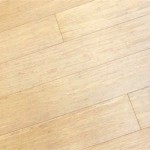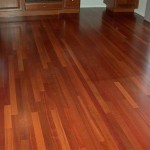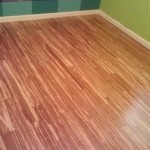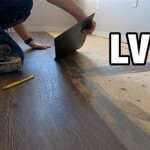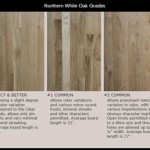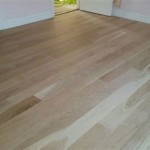Laying Laminate Flooring Over Wood: A Comprehensive Guide to a Seamless Installation
Transforming your home's interior with laminate flooring over an existing wood subfloor is a feasible and rewarding project. By meticulously following the steps outlined below, you can achieve a flawless and durable flooring installation that will enhance the aesthetics and functionality of your living space.
1. Subfloor Preparation: The Foundation for Success
Ensuring your wood subfloor meets the criteria for laminate flooring installation is paramount. The subfloor must be level, flat, and free from any significant bumps, dips, or imperfections. If necessary, sand or level the subfloor to achieve a smooth and uniform surface. Additionally, check for any moisture issues and address them promptly to prevent moisture damage to the laminate flooring.
2. Moisture Barrier: Protecting Your Investment
Installing a moisture barrier between the wood subfloor and laminate flooring is crucial to prevent moisture penetration and potential damage. Unroll the moisture barrier over the subfloor, ensuring it overlaps at the seams. Secure the moisture barrier with tape to create a continuous moisture-proof layer.
3. Underlayment: Enhancing Comfort and Sound Reduction
An underlayment layer beneath the laminate flooring provides added cushioning, sound absorption, and moisture resistance. Choose an underlayment compatible with your laminate flooring and follow the manufacturer's instructions for installation. Typically, the underlayment is laid perpendicular to the direction of the laminate flooring planks.
4. Laminate Flooring Installation: Precision and Perfection
Begin laying the laminate flooring planks along the longest wall of the room, leaving a small expansion gap of approximately 1/2 inch around the perimeter. Stagger the end joints of the planks by at least 6 inches for added stability. Tap the planks together using a tapping block and hammer, ensuring they lock securely. Continue installing the planks row by row, trimming the last plank in each row to fit the remaining space.
5. Transitions and Moldings: Finishing Touches
To create a smooth transition between different flooring surfaces or to cover the expansion gap around the perimeter of the room, install transition strips or moldings. Measure and cut the transition pieces to size, then secure them using nails or adhesive. Moldings, such as baseboards or quarter rounds, can be added to enhance the aesthetic appeal and conceal any gaps.
6. Maintenance and Care: Preserving the Beauty
Regular maintenance is essential to maintain the beauty and longevity of your laminate flooring. Sweep or vacuum the floor frequently to remove dirt and debris. For deeper cleaning, use a damp mop with a pH-neutral cleaner specifically designed for laminate flooring. Avoid using abrasive cleaners or excessive moisture, as they can damage the surface. Place mats or rugs under furniture legs to protect the flooring from scratches and indentations.

How To Install Laminate Flooring For Beginners

Installing Luxury Vinyl Floors Over Engineered Hardwood Honey Built Home

How To Install Laminate Or Vinyl Plank Flooring Over Old Hardwood

Can I Lay Laminate Flooring Over Floorboards The Guys

How To Install Vinyl Flooring Over Hardwood Floors Wood Floor Fitting

Laying Laminate On Corners Edges Transitions Parrys

How To Install Vinyl Flooring Over Hardwood Floors Wood Floor Fitting

How To Install Laminate Flooring The Home Depot

When Can I Install A New Floor Over An Old

Common Mistakes When Laying Laminate Leader Floors Blog


